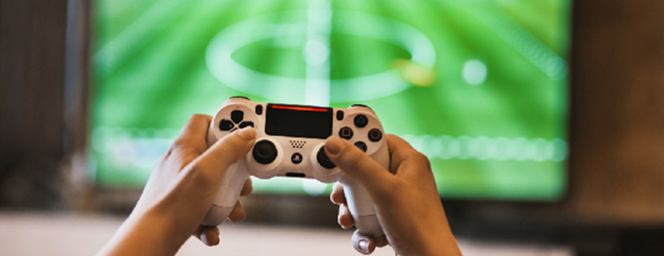6.2 Studying
Questions to consider:
- How do you prepare yourself and your environment for successful studying?
- What study strategies will be most beneficial to you?
- Does your study space aid or distract you?
Preparing to Study
Studying is hard work, but you can still learn some techniques to help you be a more effective learner. Two major and interrelated techniques involve avoiding distractions to the best of your ability and creating a study environment that works to help you concentrate.
Avoiding Distractions
We have always had distractions—video games, television shows, movies, music, friends—even housecleaning can distract us from doing something else we need to do, like study for an exam. That may seem extreme, but sometimes vacuuming is the preferred activity to buckling down and working through calculus problems! Cell phones, tablets, and portable computers that literally bring a world of possibilities to us anywhere have brought distraction to an entirely new level. When was the last time you were with a large group of people when you didn’t see at least a few people on devices?

When you study, your biggest challenge may be to block out all the competing noise. And letting go of that connection to our friends and the larger world, even for a short amount of time, can be difficult. Perhaps the least stressful way to allow yourself a distraction-free environment is to make the study session a definite amount of time: long enough to get a significant amount of studying accomplished but short enough to hold your attention.
When you prepare for your optimal study session, remember to do these things:
- Put your phone out of sight—in another room or at least some place where you will not see or hear it vibrate or ring. Just flipping it over is not enough.
- Turn off the television or music (more on that in the next section).
- Unless you are deliberately working with a study group, study somewhere alone if possible or at least far enough away from others to not hear them talking.
Study Environment
Sometimes you just need to plop down and study whenever and wherever you can manage—in the car waiting for someone, on the bus, at the Little League field as you cheer on your shortstop, that’s okay if this is the exception. For long-term success in studying, though, you need a better study setting that will help you get the most out of your limited study time. Whatever your space limitations, carve out a place that you can dedicate to reading, writing, note taking, and reviewing. What do you have now that you consider your study space? Is it set up for your optimal success?
If it is at all possible, try to make this area exclusive to your study sessions and something you can leave set up all the time and a place out of the way of family or roommate traffic. For example, Martina thought setting up her study station on the dining room table was a good idea at first. The view was calming, and the table was big enough to spread out and could even hold all her materials to study architectural drawings, her favorite subject. But then she needed the table for a small family dinner party, so she had to find a cubbyhole to hide away her supplies with some needing to go into a closet in the next room. Now she was spread out over multiple study spaces. And the family TV was in an adjacent room, not visible from the table but certainly an auditory distraction. Martina ultimately decided to forgo her view and create a smaller station in an unused bedroom so she could leave her supplies out and have a quieter area. You may have to try out numerous places to determine what works best for you.
Activity 6.2
Describe every element in your ideal study environment and explain why it’s there as well as how it will make more efficient use of your time, limit distractions, or in some other way strengthen your ability to study.
After you have described your ideal study environment, think about how you can adapt to that environment if you cannot be in your favorite place to study. How do you make your own space in the library, a student lounge, or a dedicated space on campus for studying?
Debunking Study Myths
MYTH #1: You can multitask while studying.
How many times do you eat in the car? Watch TV while you write out a grocery list? Listen to music while you cook dinner? What about type an e-mail while you are on the phone with someone else and jot down notes about the call? The common term for this attempt to do more than one thing at a time is multitasking, and almost everyone does it at some point. The problem is that multitasking does not really work. Of course, it exists, and we do it. For instance, we walk and chew gum or drive and talk but we are not really thinking about two or more distinct things or doing multiple processes simultaneously.
MYTH #2: Highlighting main points of a text is the best way to study.
Another myth of studying that seems to have a firm hold is that the idea of highlighting text—in and of itself—is the best way to review study material. It is one way, and you can get some benefit from it, but do not trick yourself into spending too much time on this surface activity and consider your study session complete. Annotating texts or notes is a first-step type of study practice. If you allow it to take up all your time, you think you are fully prepared for an exam because you put in the time. Actually, you need much more time reviewing and retrieving your lessons and ideas from the text or class lecture as well as quizzing yourself to accomplish your goal of learning so you can perform well on the exam. Highlighting is a task you can do rather easily, and it makes you feel good because you are actively engaging with your text, but true learning needs more steps.
MYTH #3: Studying effectively is effortless.
There is nothing effortless, or even pleasant at times, about studying. This is why so many students do not put in the time necessary to learn complex material: it takes time, effort, and, in some cases, a little drudgery. When done right, learning takes focus, deliberate strategies, and time. Think about a superstar athlete who puts in countless hours of drills and conditioning so that she makes her work on the field look easy.
 Analysis Question
Analysis Question
When are you most liable to multitask? How could you be more aware of this practice and try to eliminate it, especially when it comes to studying? How can you make your initial text highlighting more time efficient so you can include other study practices?
Quick Quiz 6.2
- Describe two strategies you can use to avoid distractions while studying and explain how each one helps you stay focused.
- Why is it a myth that highlighting text is the best way to study?
Licenses and Attribution
CC Licensed Content
- College Success by Amy Baldwin is licensed CC BY. Access for free.
- Psychology by Rose M. Spielman is licensed CC BY. Access for free.
References
- Abel, M., & Bäuml, K.-H. T. (2013). Sleep can reduce proactive interference. Memory, 22(4), 332–339. doi:10.1080/09658211.2013.785570. Retrieved from http://www.psychologie.uni-regensburg.de/Baeuml/papers_in_press/sleepPI.pdf
- Bellezza, F. S. (1981). Mnemonic devices: Classification, characteristics and criteria. Review of Educational Research, 51, 247–275.
- Bodie, G. D., Powers, W. G., & Fitch-Hauser, M. (2006). Chunking, priming, and active learning: Toward an innovative approach to teaching communication-related skills. Interactive Learning Environment, 14(2), 119–135.
- Craik, F. I. M., & Watkins, M. J. (1973). The role of rehearsal in short-term memory. Journal of Verbal Learning and Verbal Behavior, 12, 599–607.
- Learning to learn. (n.d.). OER Commons. https://oercommons.org/courseware/lesson/73880/overview?section=4
Images or Graphic Elements
- Images used by permission from Alamo Colleges District Department of Communications.

